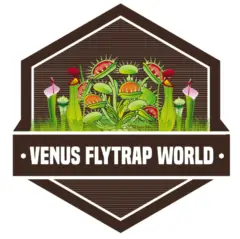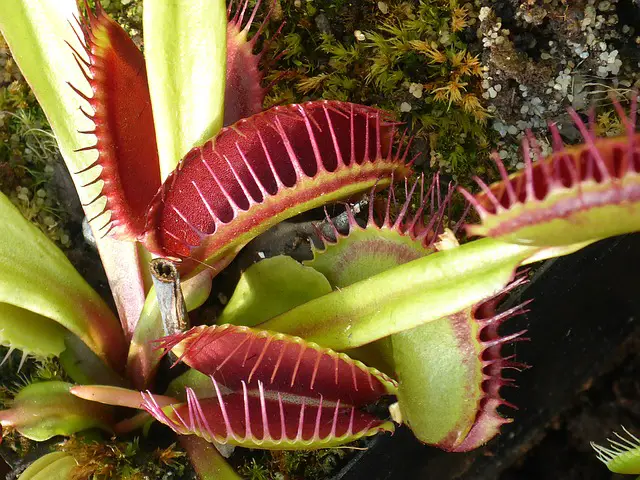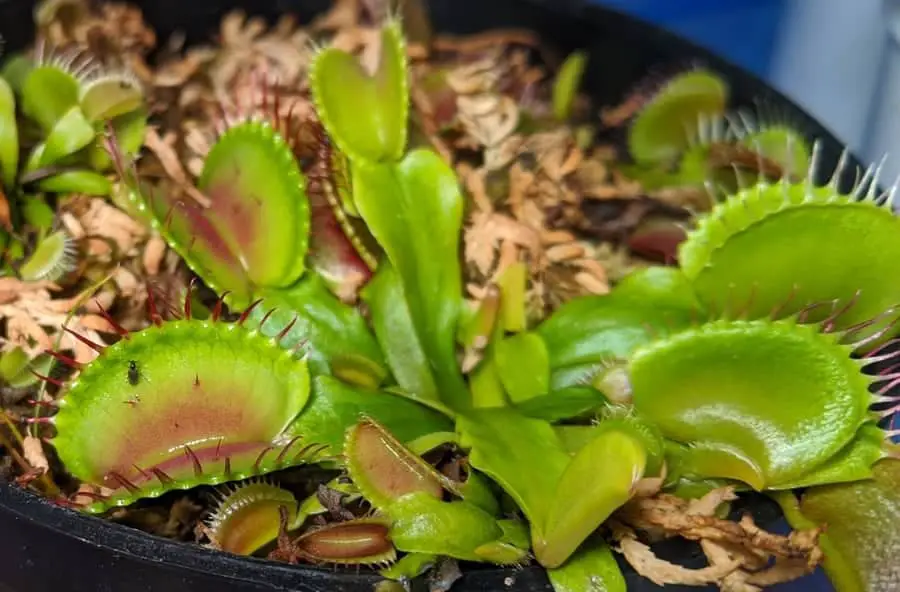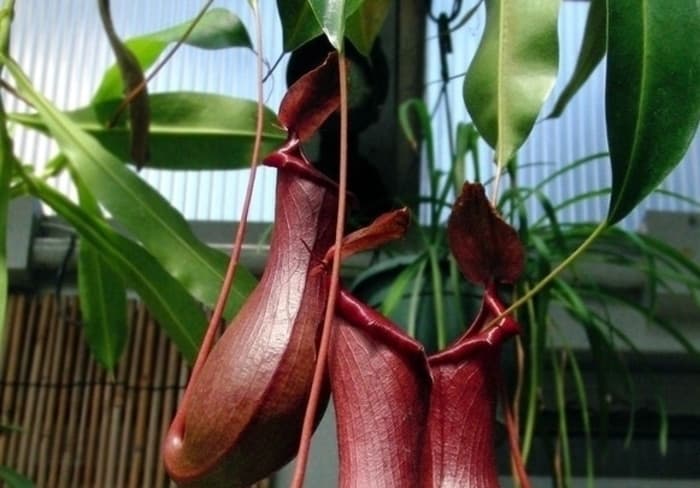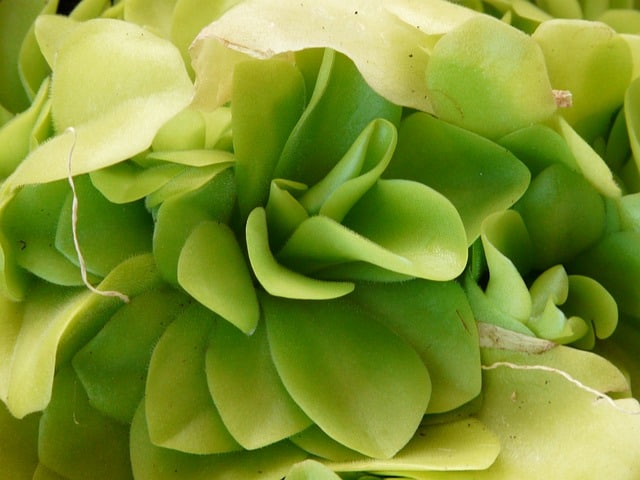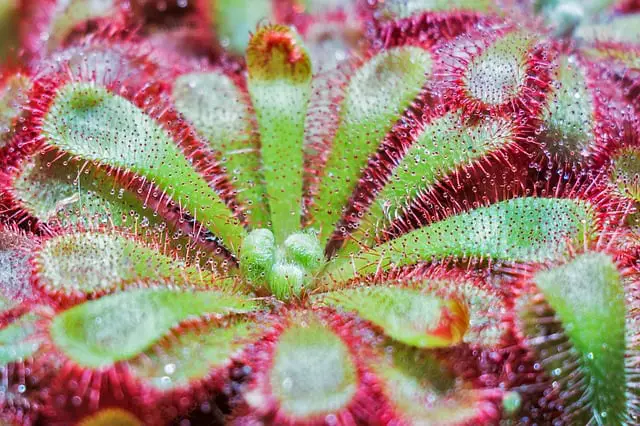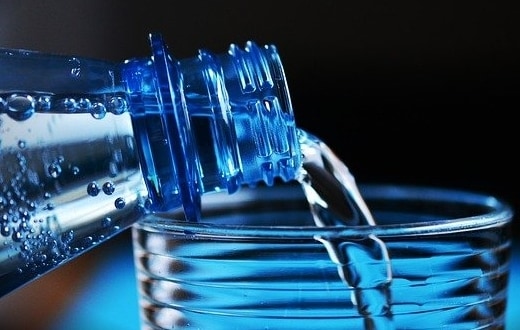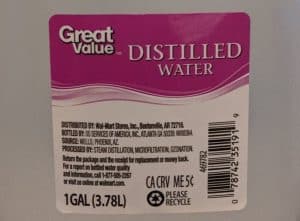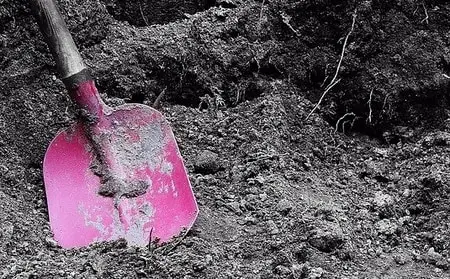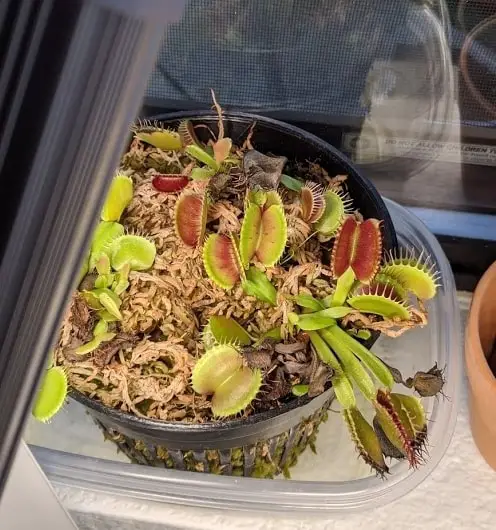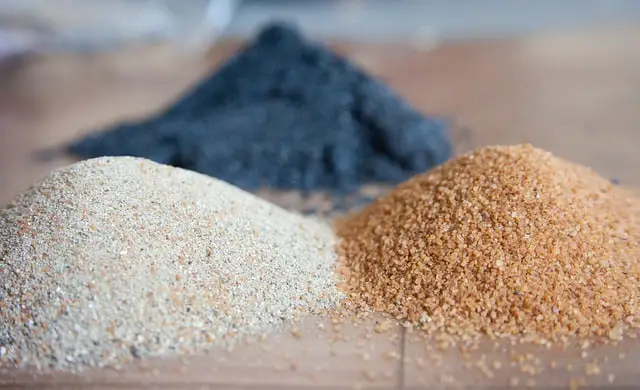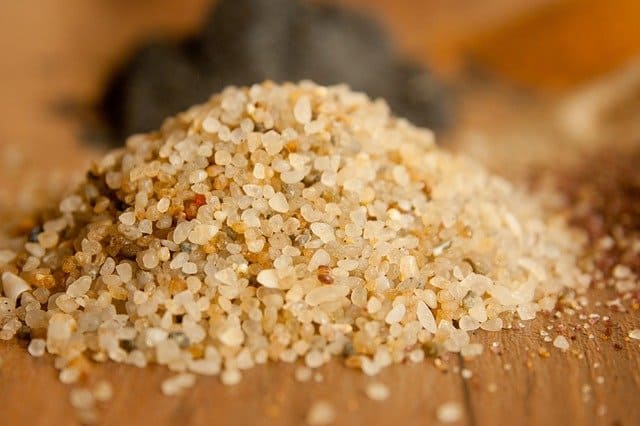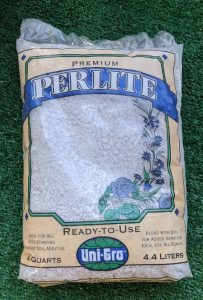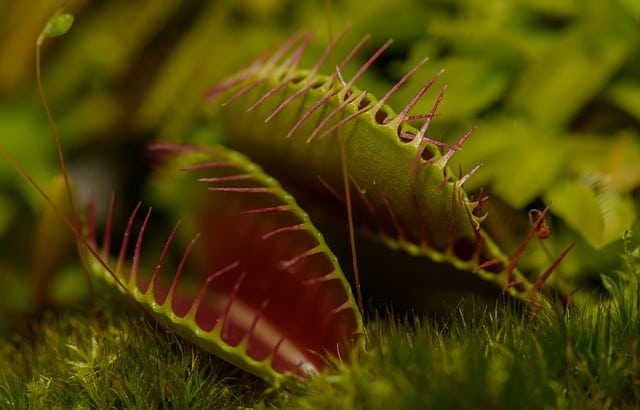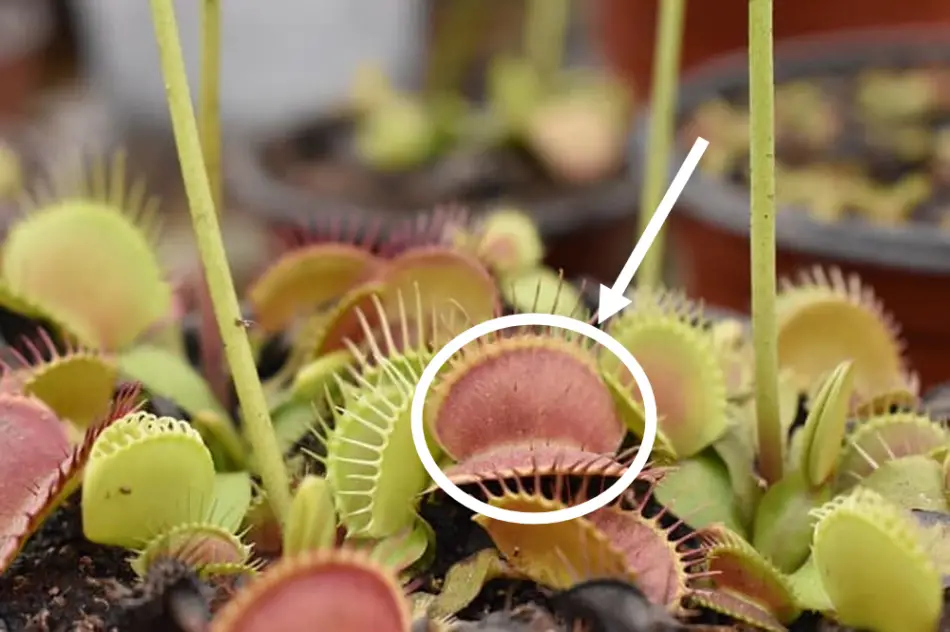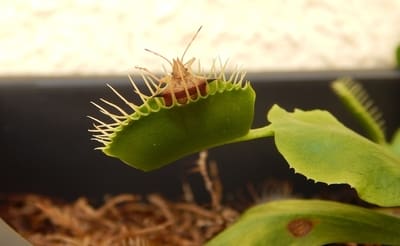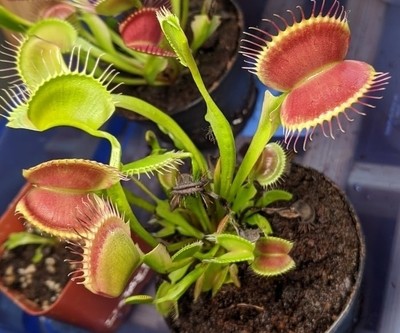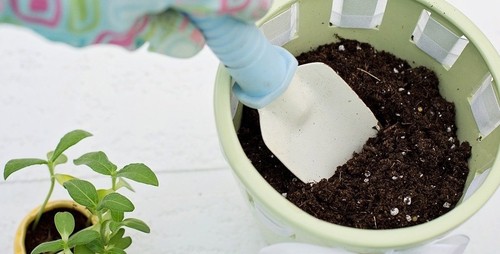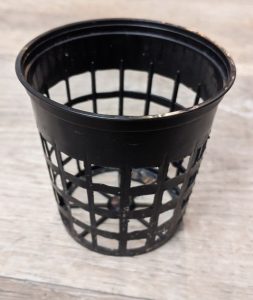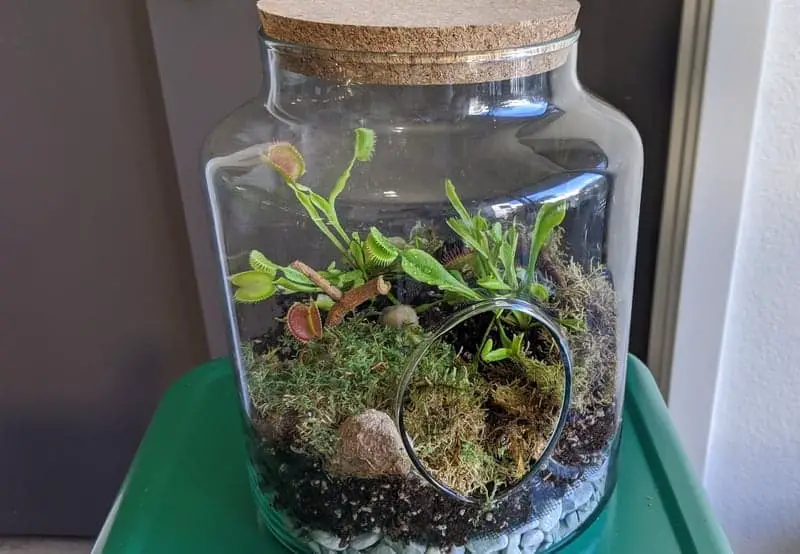Employing the right water type for Venus flytraps is critical to keep them alive and healthy. Most tap water is unsuitable for Venus flytraps, but would boiled tap water work?
Do not use boiled tap water for Venus flytraps. Boiling the tap water won’t remove minerals and other dissolved solids that are harmful to Venus flytraps. Only water Venus flytraps with distilled water, reverse osmosis water, or rainwater.
In the wild, Venus flytraps grow in nutrient-free environments. They have little to no access to minerals and other elements. As a result, Venus flytraps have developed an intolerance to nutrients.
Water with dissolved solids can kill Venus flytraps. For that reason, Venus flytrap owners must ONLY employ pure water sources.
Not all tap water is unsuitable for Venus flytraps. Tap water quality and composition can vary throughout cities or even neighborhoods.
A TDS meter can measure the total dissolved solids in the water. A measurement below 50 parts per million (ppm) indicates an acceptable water source. A low measurement is good for Venus flytraps. If you have a TDS meter or can buy one, you can check if the tap water in your home is good for watering your plant. You can buy a simple TDS meter on Amazon for less than 20 dollars; here is a link to some options.
Boiling tap water won’t make it suitable for Venus flytraps. Boiling the water will evaporate part of the liquid while keeping all the dissolved solids. This process actually increases the concentration of dissolved solids, making boiled water more harmful for Venus flytraps.
Boiling water is not a solution to obtain pure water for Venus flytraps. But, do not worry; you can obtain the right water for your Venus flytrap easily and at an affordable price.
What Water Can I Give My Venus Fly Trap?
Venus flytraps require pure water sources to survive. Water with minerals or any additives can kill Venus flytraps.
To keep a Venus flytrap healthy employ only these water sources:
- Distilled water
- Reverse osmosis water
- Rainwater
All three of these water sources are good for Venus flytraps. None is better for the health of the plant. But, when choosing one, there are some related considerations, such as price and availability.
- Rainwater: You can collect rainwater for free and use it to water your Venus flytraps and other plants. But, collecting rainwater requires prior planning. Some people build a system to collect water from their roofs and then store it. In one way or another, you will have to figure out a system to collect rain, especially if rain does not come often. Another challenge with employing rainwater is its natural availability. Some locations receive little to no rain, making this option impossible.
- Distilled water: You can buy distilled water in most supermarkets or water stores. Supermarkets sell a gallon of distilled water for a dollar or less. And water stores can sell you a gallon of distilled water for 25 cents or less. I bought a 5-gallon jug for my Venus flytraps. When I ran out of distilled water, I take the jug to the water store and refill it for less than a dollar and a half. It is an inexpensive and practical solution.
- Reverse osmosis water: Sometimes, you can find reverse osmosis water in supermarkets, but in most cases, you will need to buy it in water stores directly. Reverse osmosis water is more expensive than distilled water. Most stores sell 1 gallon for 50 cents to 1 dollar.
Rainwater is not an option for me as I live in an arid location. Between distilled water or reverse osmosis water, I prefer distilled water. It does not provide any additional benefit for my plants, but it is cheaper and easier to buy. If you buy distilled water in the supermarket, make sure to read the label. The water must be pure, and it should not contain any additives for taste.
It is possible to make distilled water for Venus flytraps at home. Follow the link for a step-by-step guide.. The process is not complicated, but it can be time-consuming.
The video below explains how to make distilled water at home. You only need a pot with a lid, tap water, ice, and a medium-size container.
How to Water Venus Flytraps
After you have collected, made, or purchased the right water source, it is time to learn how to water a Venus flytrap.
Venus flytraps require high humidity environments. They need to be watered constantly to thrive. But, they do not like to sit on standing water. When watering a Venus flytrap, moisten the soil until it is humid throughout. Before watering again, wait until the soil is less humid.
Do not flood the soil when watering Venus flytraps. Venus flytraps thrive in high humidity environments, but they do not like excessive moisture, leading to root rot and mold issues.
You can water Venus fly traps from the top or the bottom. Watering from the top is the usual method while watering from the bottom is less common.
I prefer to water Venus flytraps from the bottom. Watering them from below promotes root growths and prevents overwatering.
The process of watering from below is simple. Just place the Venus flytrap top on top of a tray and add some water. Fill the tray until 1 inch in depth. Them, you can let the plant consume the water. Refill the tray as soon as it dries up.
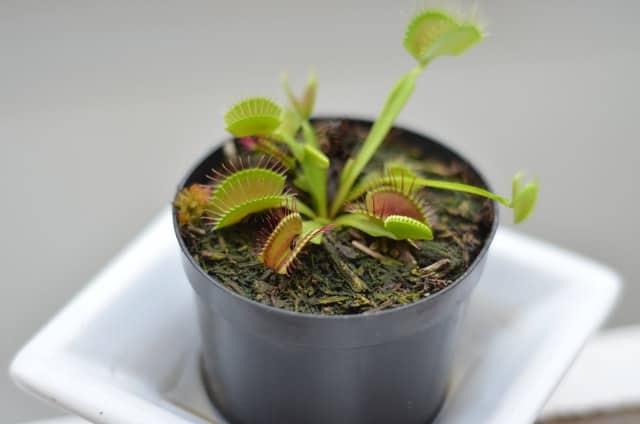
Watering Venus flytraps from the bottom is commonly referred to as the Water Tray Method. It is not only employed for Venus flytraps but with other carnivorous plants as well.
Mastering the process of watering Venus flytraps is essential for the plant’s health. In this article, you have gotten essential information regarding which water keeps Venus flytraps healthy and which water can kill them. But there is more to learn. This article can teach you how to water Venus flytraps appropriately through different seasons and climates. It includes all you need to know about the watering process.
You can also learn more about the watering process in this video. It is a short but detailed explanation.
